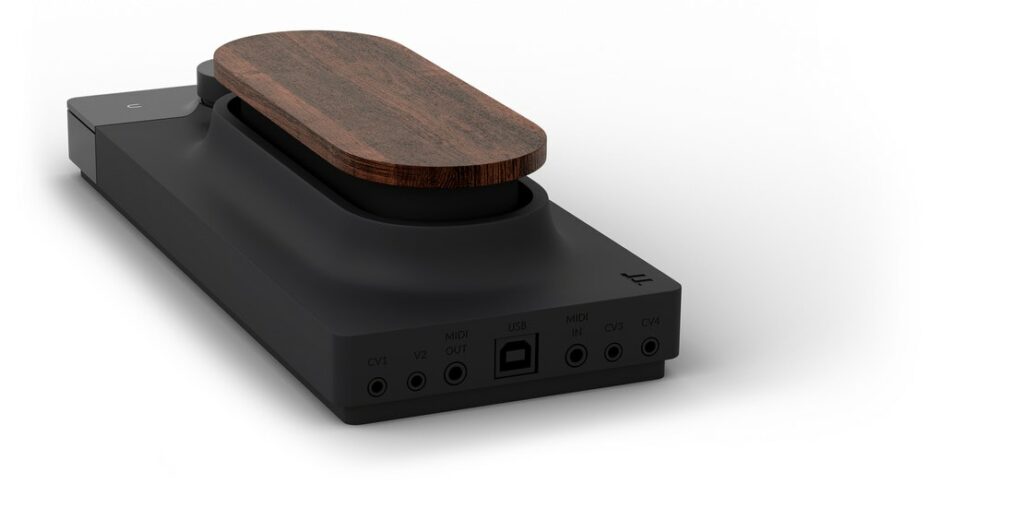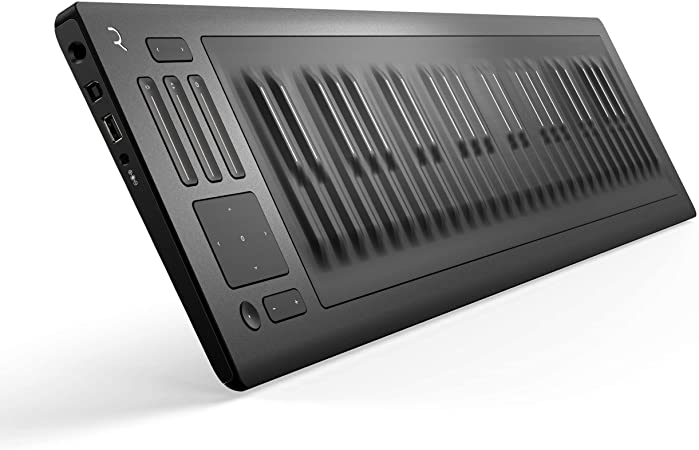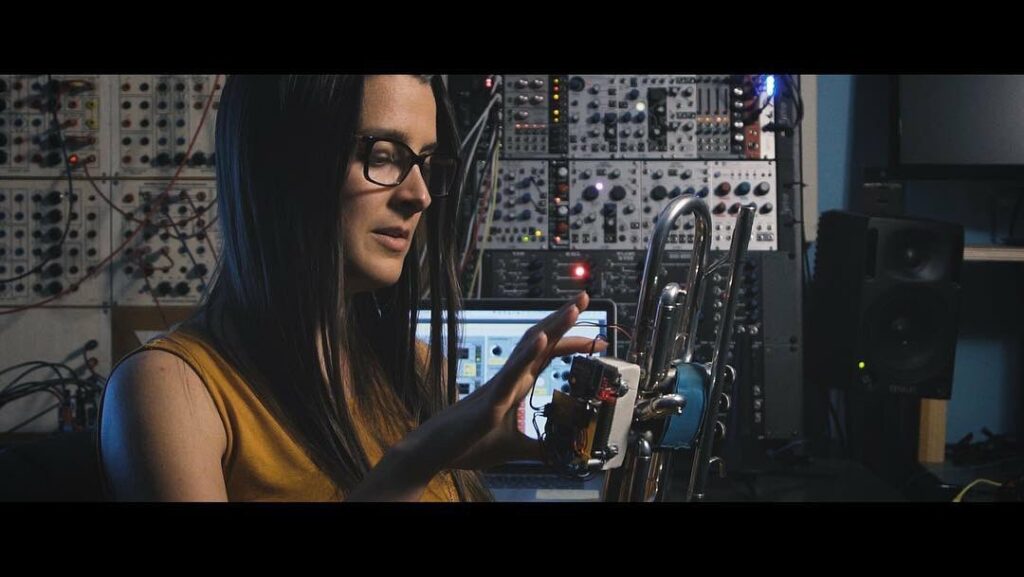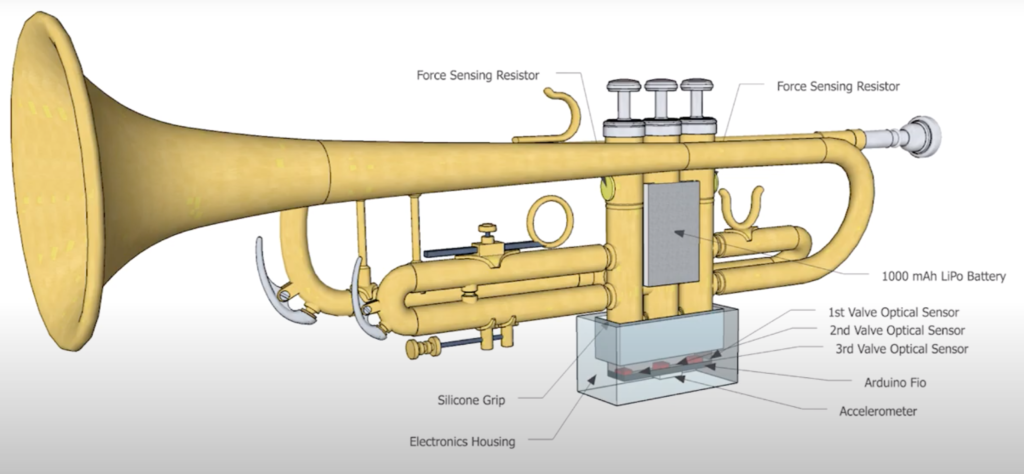What hardware microcontrollers and DSP chips are readily available to power the Interface module? That is a central question to start working on ways to implement MIR algorithms into a module. The second question is what code language is compatible with the chips and how can one implement it.
Those questions are examined in a paper by the International Conference on New Interface for Musical Expression (short NIME) named: „A streamlined work ow from Max/gen~ to modular hardware“ by Graham Wakefield, 2021 which focuses on the oopsy workflow which streamlines digital sound processing algorithms to work with the modular synthesizer environment.
As microcontrollers such as Arduino and Teensy get more powerful by the day they are more and more useful for musicians and luthiers to use in music and musical instruments. The play to make electronic music live and without a laptop that would run a DAW is a strong motivation for musicians to get into coding and learn to develop equipment which is providing often the few tools a DAW is offering them for live performances.
For DSP chips to read code programmed in a visual language like Pure Data or Max MSP the patch most of the time has to be compiled into C++. Within Max, there is for instance the [gen~] object which is capable of doing so. To implement the mach well into the hardware ‚oopsy‘ was developed which streamlined the workflow, to get an algorithm onto hardware, with a targeted firmware generation that is optimized for CPU usage and low memory footprint and program size, with minimal input required.
Electrosmith Daisy:
Processor: ARM Cortex-M7 STM32H750 MCU processor with 64MB of SDRAM and 8MB of
flash memory, IO: Stern, 31 configurable GPIO pins, 12x 16-bit ADCs, 2×12 bit DACs, SD Card interface, PWM outputs, micro USB port (power and data), Dasy Seed: 51×18 mm
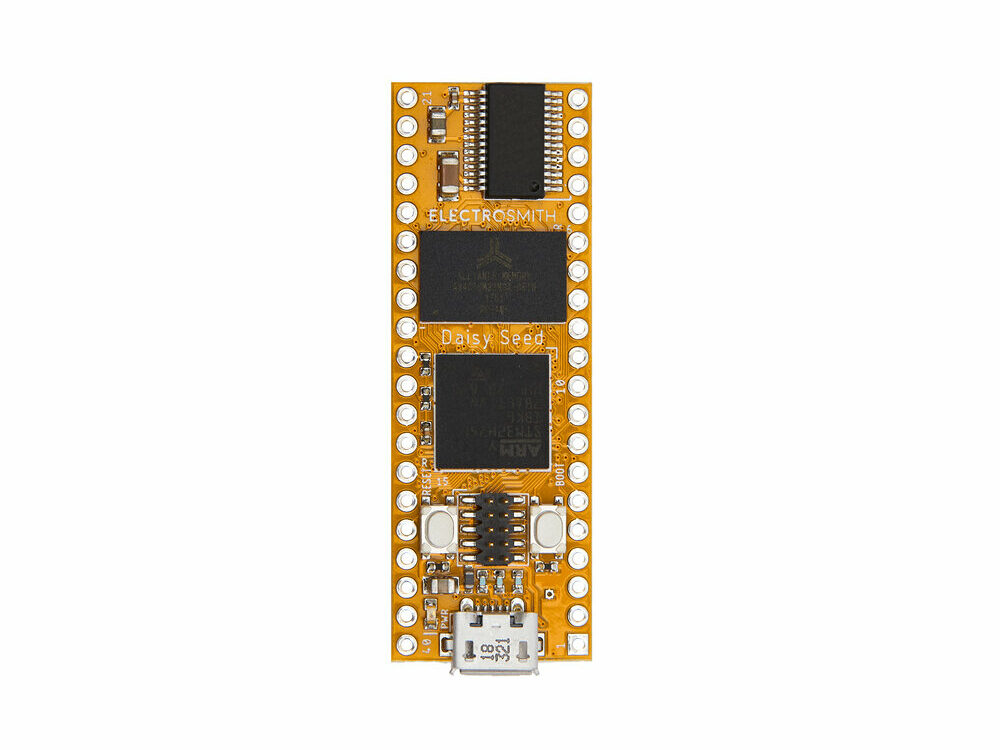
It is a common microcontroller in Modular Synth gear today. The MCU processor is with its maximal 480MHz quite capable and the AK4556 Codec has AC-coupled converters that internally run with 32-bit floating-point. Daisy firmware can be developed using Arduino, FAUST, PureData via Heavy, as well as Max/gen~ using the Oopsy software. internal latency down to 10 microseconds.
Bela Beaglebone:
Bela is an open-source platform based on the beaglebone single-board computer design for live audio. It is compatible with Supercollider, PureData, and C++. It is optimized for ultra-low latency, with 0,5 ms it is better for desktop, cellphone, Arduino, and Raspberry Pi solutions.

Owl Programable platform
8kHz to 96kHz sampling rate, 24 bit stereo codec, 3500 operations per sample @ 48kHz, Powerful STM32F4 microcontroller: 168MHz 32bit ARM Cortex M4, 192Kb RAM, 1Mb Flash memory, Integrated DSP, FPU, DMA, 1Mb 10nS SRAM, USB MIDI
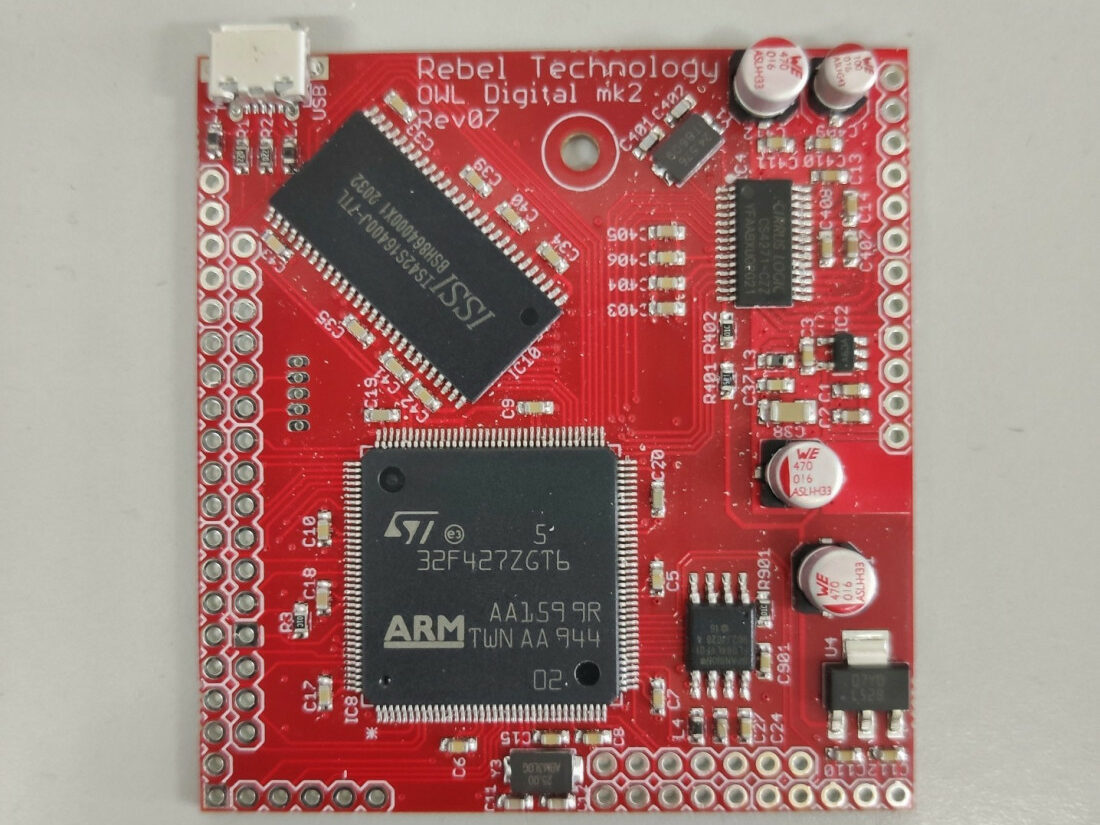
IO Eurorack module: 2 audio inputs, 2 audio outputs, 5 CV inputs, 1 gate/trigger in, 1 gate/trigger out, 1 USB Type B connector
References
Graham Wakefield. 2021. A streamlined workflow from Max/gen~ to modular hardware. Proceedings of the International Conference on New Interfaces for Musical Expression. http://doi.org/10.21428/92fbeb44.e32fde90.
electro-smith.com
bela.io
rebeltech.org
